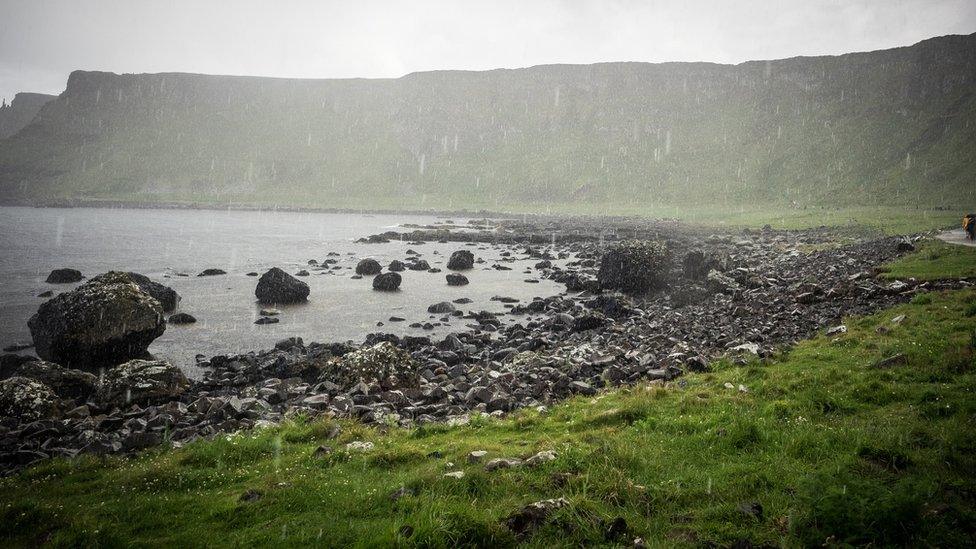Northern Ireland weather: Wettest July on record
- Published

Not everyone is this happy when it rains
Northern Ireland has had its wettest July on record, with figures going back to 1836, according to the Met Office.
Provisional figures show more than double the normal amount of rain fell during the month, with 185.4mm recorded.
The previous record was 185.2mm, set back in July 1936.
It will come as no great surprise to hear that July 2023 was wet, and exceptionally wet, in parts of Northern Ireland.
Rainfall records were also broken at individual weather stations, including at Castlederg, in County Tyrone, which recorded about two and a half times its normal amount of rainfall for the month.
A lot of that fell when heavy and persistent rain caused flooding in the County Tyrone town, as well as parts of County Donegal, in the Republic of Ireland, on 23 July.
Seven other stations also recorded their wettest July on record in all six counties.

Rainfall totals in mm recorded at official rain gauges:
Castlederg, County Tyrone 219.4 - Wettest
Magilligan, County Londonderry 174.8 - Wettest
Lough Fea, County Tyrone 217 - Wettest
Portglenone, County Antrim 187.2 - Wettest
Thomastown, County Fermanagh 213.2 - Wettest
Derrylin, County Fermanagh 204.6 - Wettest
Aldergrove, County Antrim 129 - Second wettest
Glenanne, County Armagh 163.2 - Wettest
Katesbridge, County Down 131.8 - Second wettest
Killowen, County Down 159.8 - Wettest
Killylane, County Antrim 191.6 - Second wettest


Tourists and day-trippers visiting spots like the Giant's Causeway have seen lots of mizzle
The Republic of Ireland meanwhile looks set to confirm its wettest July on record, with figures going back to 1940, according to Met Éireann.
The country recorded four times the amount of rain it had in July 2022, and more than twice the rainfall seen in July 2021.
In fact, over the past 12 months Ireland has had its wettest October, March, and now likely July on record. , external
Why have we had such a poor July when all we keep hearing about is climate change and record-breaking temperatures elsewhere in Europe, North America and parts of Asia?
It is important to remember that climate change is global and is an overall trend over a period, not just one month in one year in one part of the globe.
Why has it been such a rainy summer?
The position of the jet stream has been crucial to July's weather across the UK and Ireland.
It is a fast flowing current of air, about six miles above the earth, driving low pressure systems from west to east across the Atlantic, giving us the unsettled weather.
When we get kinks in the jet stream, it can resemble an Oxbow Lake - think Eastenders and the river Thames in London with peaks and troughs.
The UK and Ireland have been caught in one of these troughs throughout most of the month with the jet stream stuck to the south of us.
That effectively blocked warmer and more settled weather from moving north which is typical in the summer months.
Instead, it has kept cooler and more unsettled weather coming our way from the north Atlantic.
Unsurprisingly it was also a very dull July with just 70% normal sunshine.
Related topics
- Attribution
- Published26 October 2020
